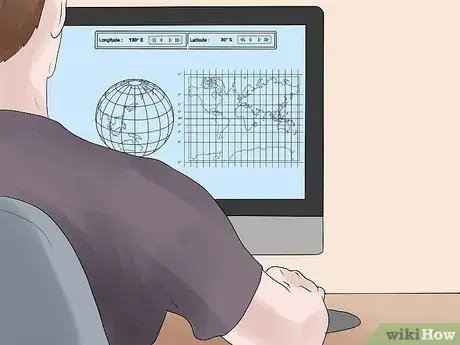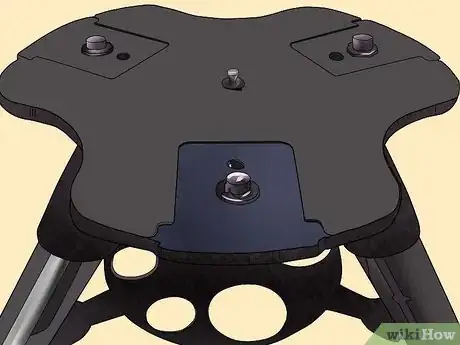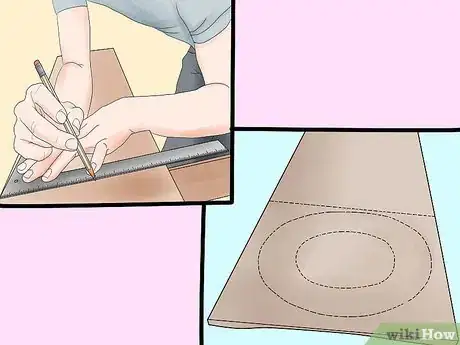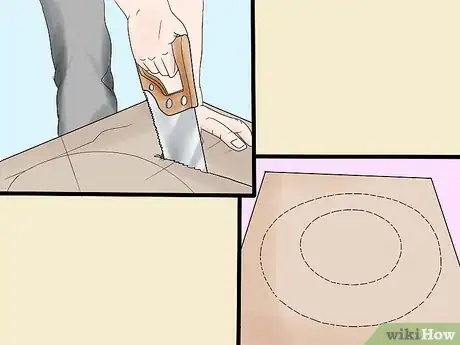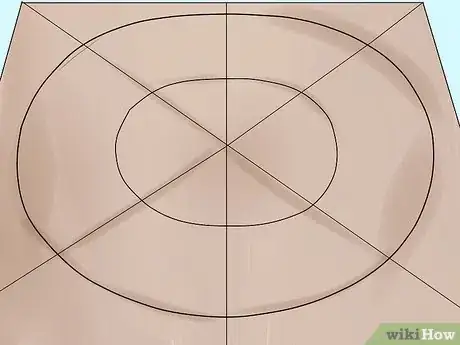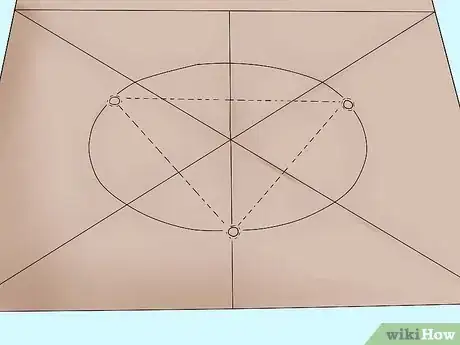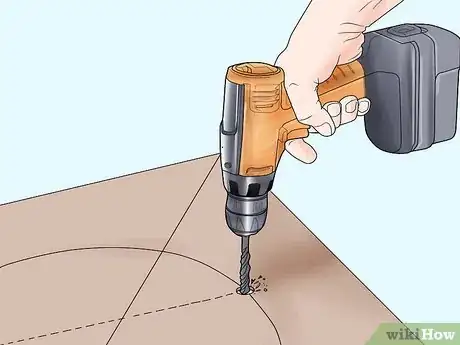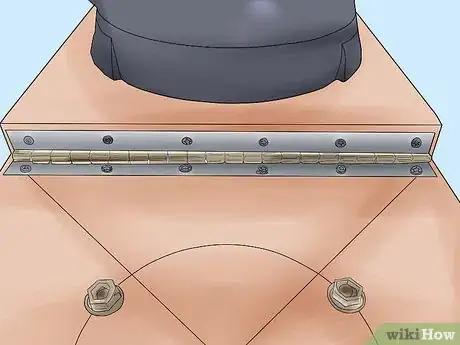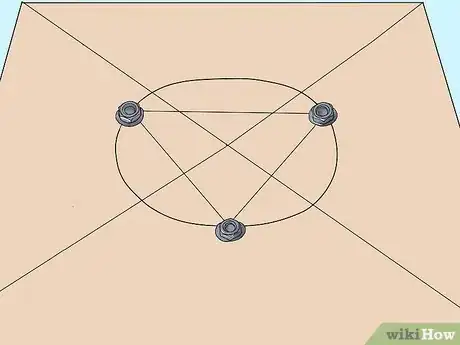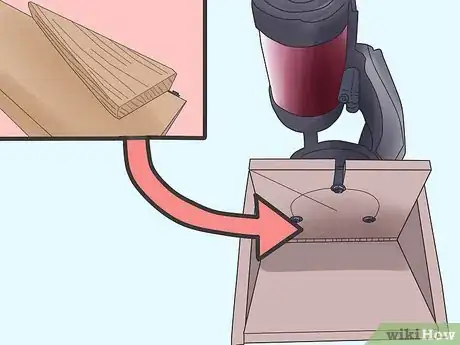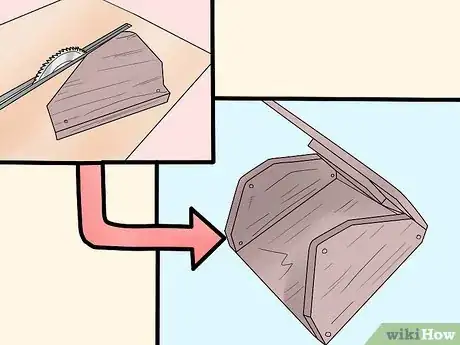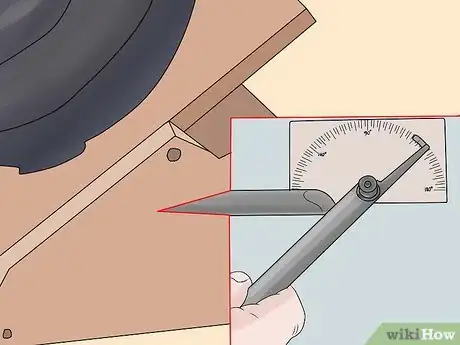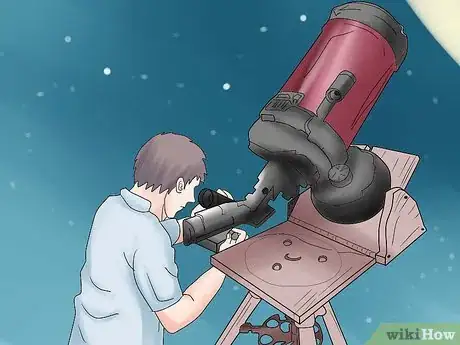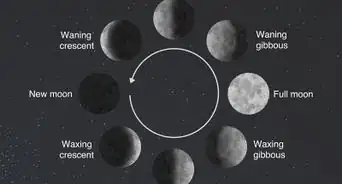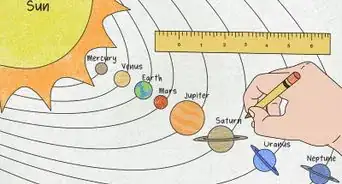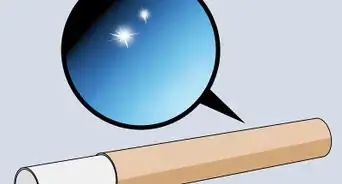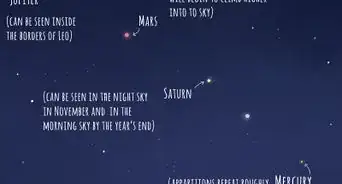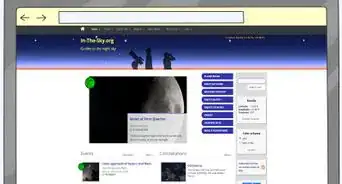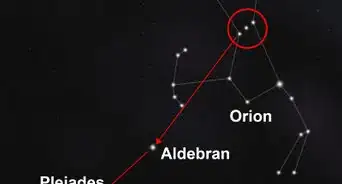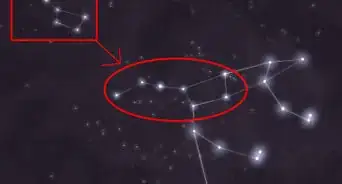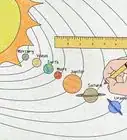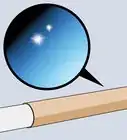wikiHow is a “wiki,” similar to Wikipedia, which means that many of our articles are co-written by multiple authors. To create this article, 9 people, some anonymous, worked to edit and improve it over time.
This article has been viewed 88,792 times.
Learn more...
Astronomy is a very popular hobby. Humans have been interested in the things they can see in the sky since before recorded history, and that interest shows no sign of abating. There are many brands and types of telescopes out there. The vast majority of affordable amateur telescopes that you can purchase come with what are known as "alt-azimuth" mounts. This means that the telescope's OTA (Optical Tube Assembly) can be pivoted up and down (altitude) and right or left (azimuth).
These are fine for visual observation and short exposure photography, but if you want to try your hand at astrophotography, you will need to mount your telescope on an equatorial (EQ) mount that allows you to align your telescope with the latitude at your location.
Upgrading your alt-az mount to equatorial can be expensive, though. Commercial EQ wedges will run you anywhere from $200 up. Equatorial mounts can also be expensive, particularly if they are computerized for "Go To" capability. Used ones can be obtained for less, but why buy one when you can build your own and learn something new in the process?
This article will walk you through the construction of a simple, fixed-elevation equatorial wedge. Most amateur astronomers observe the sky from the same place every night, so a fixed-angle wedge is all that is needed. This one, however, can easily be modified to allow adjustment if you so desire.
The images depict a wedge for a Celestron NexStar 6SE 6" Schmidt-Cassegrain telescope, but with a little ingenuity and some elbow grease the concepts can be applied to any telescope mount.
Steps
-
1Identify the latitude for your chosen viewing location. For amateur purposes, you only need to narrow it down to an accuracy of one tenth of a degree, rounded up to the nearest tenth. For example, downtown Boston is located at 42.3 degrees north latitude. Write this down -- you will need it later on. There are several ways you can obtain the coordinates for the location.
- With any GPS that can display your position (on a Garmin device, for example, the "Where am I?" screen will show your current coordinates).
- Any smartphone app such as GPS Status that can do the same using the internal GPS.
- With Google Earth
- With Google Maps.
-
2Measure the base of your telescope mount. You will need to measure the length and width of the mount. Assuming that you already made sure your plank of wood is at least four inches wider than the mount, add four inches to the length of the mount at the base.Advertisement
-
3From the edge of the plank, measure the distance to match the number of inches or mm calculated in step 2. Draw a line with the pencil across from edge to edge. From that line, measure twice the distance and draw a second line. Halfway between, draw a third line. The first measurement will give you the wood for the base mount, the second for the longer plank that will bolt to the top of the telescope tripod. In the end you should have three lines, all the same distance from each other.
-
4Cut the plank. You will first cut one smaller piece for the telescope mount and a second piece, twice as long, for the tripod base. That piece will have the line you drew right across the middle.
-
5Mark the centers. On the smaller piece, mark the center by drawing two lines diagonally from the corners. On the larger piece, do the same but from the edge to the line drawn halfway down its length.
-
6Measure and mark the bolt holes. This part is tricky. You will need to measure the distance from the center of the telescope mount to the center of the bolt holes as well as the angles in order to mark and drill the holes. You'll need to do the same for the bolt holes on the top of the tripod, but keep in mind that the bolt hole layout may be different, so don't assume they are the same.
-
7Drill the bolt holes. You may have to adjust a bit and make the holes oversize to get them to fit properly. That's OK, as long as you use washers the boards will not move on the tripod. On the smaller board, use a jigsaw or small saw to cut from the edge of the board to the bolt hole whose radius is perpendicular to the edge, as shown in this image. The cuts should create a slot whose sides align with the edges of the drilled hole. This will make it easier to mount the telescope base to the wedge.
-
8Install the hinge. If you have not done so already, cut the piano hinge to the width of the board for the telescope mount. Carefully align the hinge on the line you drew halfway down the length, clamp it down and install one side of it using two wood screws on each end. You can then remove the clamp. Place the telescope mount board next to the hinge with the slot cut away from the hinge, hold it as close to the hinge as possible and screw it to the side edge of the board. The hinge should touch the base and the telescope mount board should hinge up, as shown in the image.
-
9Bolt the wedge to the top of the telescope mount, making sure you use washers on each bolt.
-
10Decide how you will support the telescope mount base. At this point you can do one of two things. You can cut triangular pieces of wood to insert underneath the telescope mount board and hold it at a fixed angle, or you can cut larger pieces to attach on the outside of the long base board to support the telescope mount, but also give you the ability to modify the angle if needed. The tricky part here is the geometry. The top surface of the telescope base mount must be raised to an angle equal to the latitude of your location (you did write that down in step 1, right?) That angle needs to be as accurate as possible, but for amateur purposes the tolerances need not be microscopic.
-
11Build the supports. In my case, I used two pieces of wood, cut them roughly to the shape of a slice of pizza, with the radius about an inch longer than 1/2 the length of the telescope base mount board, and attached it to the outside of the wedge with screws. You can (and probably should) use a wood router to make dado cuts and apply glue. I used wood screws.
-
12Raise the board to the desired angle. Remember to measure the angle of the top surface of the board. Triple-check the angle, secure the board and drill holes on each side slightly smaller than the wood screws and into the edge of the board. Insert screws.
-
13At this point you should have a working wedge. All you need is a clear night, and an understanding of how to polar align the telescope. The shelf under the telescope mount board can be used to store eyepieces, or a larger battery to power the scope's electronics. Sand everything down to remove any splinters and sharp edges and finish to your preference.
-
14You now have a platform for astrophotography! Enjoy!
Community Q&A
-
QuestionOn "Things you will need" - "...five feet long and at least four inches wider than the base of your scope mount (for the 6SE, 11.25" wide will do)." Is that right, will I need a five feet long plank?
 JuanCommunity AnswerIf you consider all the pieces you have to cut, that's a safe bet. If you can do the layout better than I can, you may be able to get away with using less wood.
JuanCommunity AnswerIf you consider all the pieces you have to cut, that's a safe bet. If you can do the layout better than I can, you may be able to get away with using less wood. -
QuestionCan someone explain to me how to adjust the elevation? I cannot understand.
 JuanCommunity AnswerStep 12 answers your question. It shows how to set the angle of the wedge after determining what the angle should be based on your location.
JuanCommunity AnswerStep 12 answers your question. It shows how to set the angle of the wedge after determining what the angle should be based on your location. -
QuestionMy wedge will be out of 3/4" plywood, or 2 x 12" pine. My scope is a big 65 pounder, the Celestron 11" CPC SCT. For the bottom tripod plate, where to mount it to balance it properly and not be front heavy?
 JuanCommunity AnswerYour OTA is probably way too big for a wedge. I have never seen an 11" OTA on a wedge.
JuanCommunity AnswerYour OTA is probably way too big for a wedge. I have never seen an 11" OTA on a wedge.
Warnings
- Wear safety glasses at all times when performing the construction, cutting wood, painting, etc.⧼thumbs_response⧽
- If your telescope mount and OTA (optical tube assembly) are large, the wedge will make them even heavier. Be careful when moving the unit, and check the tripod's specifications to make sure it can handle the additional weight of the wedge.⧼thumbs_response⧽
- For a large OTA (11" or more) you should considering purchasing a fork mount rather than building a wedge. Such a large telescope would require a much larger mounting base to distribute the weight, and the thickness of the wood used would have to be increased as well for the same reason. A fork mount would allow you to locate the center of gravity of the OTA over the vertical axis of the telescope, making it much safer to handle. You may want to search the Internet for "DIY FORK MOUNT" for construction ideas, as you would not be reinventing the wheel.⧼thumbs_response⧽
Things You'll Need
- One plank of strong solid oak, 3/4" thick, five feet long and at least four inches wider than the base of your scope mount (for the 6SE, 11.25" wide will do).
-
Six bolts with washers
- Three 3/8" by 1.5"
- Three 5/16" by 1.5"
- These are the sizes required for the Celestron NexStar mount, check your mount to see if it's different.
- A length of piano hinge as long as your plank of oak is wide (if it's longer, trim it with metal-cutting snips).
- #10 screws, 1.5" long, countersunk heads (regular heads will do but countersinking is easy and looks better).
- A protractor.
- A ruler.
- Hand drill with a variety of bits for wood.
- Some kind of saw to cut the wood (I used a jig saw).
- A screwdriver.
- A #2 pencil for marking.
-
For finishing...
- Various grades of sandpaper
- Your choice of a paint or stain
- A clean rag to take off the excess if staining
- A paint brush
- If you plan to use it outdoors a lot, you may want to purchase a good wood sealant like spar urethane in a spray can.
